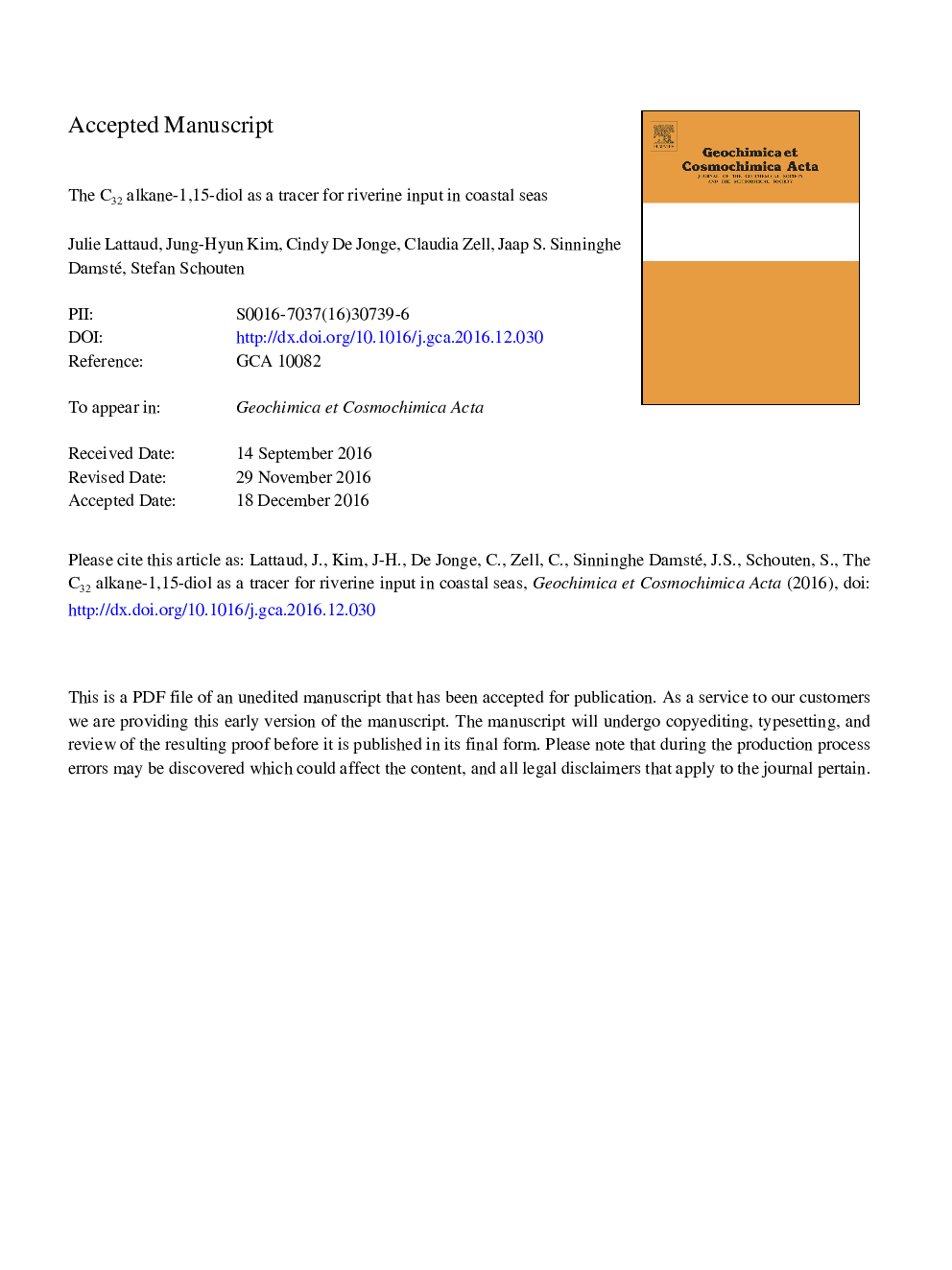| Article ID | Journal | Published Year | Pages | File Type |
|---|---|---|---|---|
| 5783499 | Geochimica et Cosmochimica Acta | 2017 | 41 Pages |
Abstract
Long chain alkyl diols are lipids that occur ubiquitously in marine sediments and are used as a proxy for sea surface temperature (SST), using the Long chain Diol Index (LDI), and for upwelling intensity/high nutrient conditions. The distribution of 1,13- and 1,15-diols has been documented in open marine and lacustrine sediments and suspended particulate matter, but rarely in coastal seas receiving a significant riverine, and thus continental organic matter, input. Here we studied the distribution of diols in four shelf seas with major river outflows: the Gulf of Lion, the Kara Sea, the Amazon shelf and the Berau delta, covering a wide range of climate conditions. The relative abundance of the C32 1,15-diol is consistently higher close to the river mouth and particularly in the suspended particulate matter of the rivers suggesting a terrigenous source. This is supported by statistical analysis which points out a significant positive correlation between the C32 1,15-diol and the Branched and Isoprenoid Tetraether index, a proxy reflecting soil and riverine input in marine environments. However, the C32 1,15-diol was not detected in soils and is unlikely to be derived from vegetation, suggesting that the C32 1,15-diol is mainly produced in rivers. This agrees with the observation that it is a dominant diol in most cultivated freshwater eustigmatophyte algae. We, therefore, suggest that the relative abundance of the C32 1,15-diol can potentially be used as a proxy for riverine organic matter input in shelf seas. Our results also show that long chain alkyl diols delivered by rivers can substantially affect LDI-reconstructed SSTs in coastal regions close to river mouths.
Keywords
Related Topics
Physical Sciences and Engineering
Earth and Planetary Sciences
Geochemistry and Petrology
Authors
Julie Lattaud, Jung-Hyun Kim, Cindy De Jonge, Claudia Zell, Jaap S. Sinninghe Damsté, Stefan Schouten,
